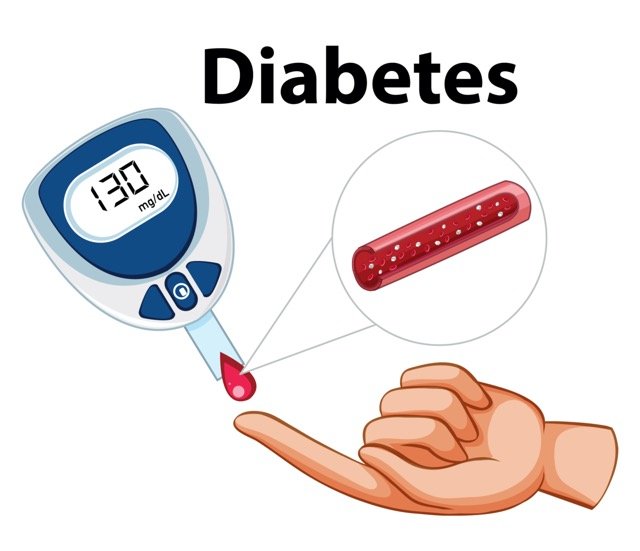Acetylcysteine is used to treat acute Acetaminophen/ paracetamol overdose. It is used as an antioxidant that reduces hepatic injury. It is also used to thin phlegm and helps in getting rid of it easily.
As a mucolytic, it may be used in patients with the following conditions:
- Chronic bronchitis
- Emphysema
- Chronic asthmatic bronchitis
- Tuberculosis
- Bronchiectasis
- Pneumonia
- Acute bronchitis
- Tracheobronchitis
- Cystic fibrosis
- Tracheostomy care
- Lung collapse due to mucus impaction
- Diagnostic bronchial studies
Acetylcysteine Dose in Adults
Acetylcysteine dose in acute Acetaminophen overdose:
Note: Only the 72-hour oral regimen and the 21-hour intravenous regimens are FDA approved.
- Ideally, treatment should begin as soon as possible and within 8 hours of ingestion of acetaminophen ingestion.
- For patients who present after 8 hours of ingestion, or where acetaminophen levels are not available, and where the exact time of ingestion is not known, treatment should be initiated immediately and the need for acetylcysteine reevaluated.
- Patients' condition, Liver function tests, and acetaminophen levels should be measured prior to initiating therapy and at the end of the treatment.
- The treatment course may be extended beyond the 72-hours oral and the 21-hours intravenous regimen if the patient exhibits signs of liver toxicity.
- Patients with massive ingestion, ingestion of other drugs or chemical substances, persistently elevated acetaminophen levels, persistently abnormal liver functions, elevated INR, and those with preexisting liver disease may be treated beyond the recommended period.
- Typically, a third dose is administered as 100mg/kg up to a maximum of 10 gms infused over 16 hours. Consultation with a clinical toxicologist should be done in such cases.
The 72-hour oral regimen:
- Including the loading dosage, there are a total of 18 doses.
- The maintenance dose is given after the loading dose of 140 mg/kg.
- Every four hours, a maintenance dose of 70 mg/kg is given.
The 21-hour intravenous regimen:
- There are three doses in all, including the loading dosage.
- The loading dose is 150 mg/kg administered over an hour with a 15 gm maximum dose.
- 50 mg/kg for the second dosage (maximum dose: 5 gms) injected for four hours
- 100 mg/kg for the third dosage (maximum dose: 10 gms) injected for sixteen hours
Note: According to the following table, patients who weigh under 40 kg should have a less fluid intake: Guidelines for Acetadote Dosing and Fluid Volume in Patients Weighing 40 kg or Less.
| Body Weight (kg) | Loading Dose 150 mg/kg over 1 hour | Second Dose 50 mg/kg over 4 hours | Third Dose 100 mg/kg over 16 hours | |||
| Acetadote (mL) | Diluent (mL) | Acetadote (mL) | Diluent (mL) | Acetadote (mL) | Diluent (mL) | |
| 40 | 30 | 100 | 10 | 250 | 20 | 500 |
| 30 | 22.5 | 100 | 7.5 | 250 | 15 | 500 |
| 21 | 15.75 | 100 | 5.25 | 250 | 10.25 | 500 |
| 20 | 15 | 60 | 5 | 140 | 10 | 280 |
| 15 | 11.25 | 45 | 3.5 | 105 | 7.5 | 210 |
| 10 | 7.5 | 30 | 2.5 | 70 | 5 | 140 |
| 5 | 3.75 | 15 | 1.25 | 35 | 2.5 | 70 |
For patients who weigh 100 Kgs or more, the following dosing regimen should be followed:
The 72-hour oral regimen consisting of 18 doses.
- A Loading dose of 15 gms
- Maintenance dose of 7.5 gm every 4 hours
The 21-hour intravenous regimen consists of 3 doses.
- A Loading dose of 15 gms infused over 1 hour
- The Second dose of 5 gms infused over 4 hours
- The Third dose of 10 gms infused over 16 hours
Acetylcysteine dosing in Respiratory conditions:
Note: Patients should be nebulized with a bronchodilator prior to initiating therapy with acetylcysteine. 3 - 5 ml of acetylcysteine 10% and 20% solution is diluted in sodium chloride or sterile water for inhalation given three or four times a day. 1 to 2 ml may be directly instilled into the tracheostomy every one to 4 hours.
Acetylcysteine Dose in Childrens
Acute Acetaminophen overdose: See adult dosing
Acetylcysteine dosing in Respiratory conditions:
Note: Patients should be nebulized with a bronchodilator prior to initiating therapy with acetylcysteine. 3 - 5 ml of acetylcysteine 10% and 20% solution is diluted in sodium chloride or sterile water for inhalation given three or four times a day. 1 to 2 ml may be directly instilled into the tracheostomy every one to 4 hours.
- Infants may be given a lower dose i.e. 1 to 2 mL of 20% solution or 2 to 4 mL 10% solution given 3 to 4 times/day.
- Children and adolescents: Refer to adult dosing.
Pregnancy Risk Factor B
- Acetylcysteine crosses into the placenta, and may protect the fetus from mothers who consume toxic amounts of acetaminophen.
- You should use it with caution due to the risk of teratogenicity. However, animal studies have not shown that there are any adverse fetal outcomes.
Acetylcysteine use during breastfeeding
- It is unknown whether breastmilk contains acetylcysteine.
- Before using acetylcysteine during breastfeeding, it is important to weigh the risks and benefits.
Acetylcysteine Dose in Kidney Disease:
- The manufacturer does not advise any dose adjustment in renal disease.
Acetylcysteine Dose in Liver disease:
- The manufacturer does not advise any dose adjustment in patients with liver disease.
Acetylcysteine common side effects with the intravenous formulation:
- Immunologic:
- Autoimmune disease.
- Miscellaneous:
- Allergic and Anaphylactoid reaction
Less common side effects of N-acetylcysteine (Mucolator):
- Cardiovascular:
- Flushing
- Tachycardia
- Edema.
- Dermatologic:
- Urticaria
- Rash
- Pruritus.
- Gastrointestinal:
- Vomiting and nausea.
- Respiratory:
- Pharyngitis
- Rhinorrhea
- Wheeze
- Throat tightness.
N-acetylcysteine Side effects observed with the oral formulation:
Hypersensitivity reactions, chest tightness, fever, urticaria, rash, nausea, vomiting, bronchitis, and bronchospasm.
Contraindications to N-acetylcysteine (Mucolator):
- Allergic reactions to acetylcysteine and any component of the formulation.
Warnings and Precautions
-
Allergy reactions:
- Anaphylactic reactions can occur after intravenous or oral administrations of acetylcysteine.
- Slower administration of the drug may help reduce the risk of anaphylactic reactions.
- After treatment for allergic symptoms has been completed, it is important to restart the infusion slowly.
- Patients who have high levels of acetaminophen are at lower risk for anaphylactic reactions.
-
Fluid Overload:
- Fluid overload can occur when intravenous administration is done. This could lead to seizures, hyponatremia and even death.
-
Bronchospasm
- Patients with asthma are more likely to experience hypersensitivity reactions.
-
Gastrointestinal Side effects:
- Acetylcysteine can produce nausea and vomiting when taken orally.
- Patients may have nausea and vomiting as a result.
-
Use with ventilator-dependent patients:
- Inhalation of acetylcysteine should be done after suctioning, postural drainage and bronchodilator treatment. If bronchospasm worsens, therapy should be stopped.
Monitoring Parameters:
- anaphylaxis
- allergic reactions.
- AST
- ALT
- Bilirubin
- Prothrombin time
- INR
- BUN
- Serum creatinine
- Blood glucose
- Liver function tests
- Acetaminophen levels
How to administer Acetylcysteine (Mucolator)?
Note: Tetracyclines, erythromycin, amphotericin B, iodized oil, chymotrypsin, trypsin, and hydrogen peroxide shouldn't be used in combination with acetylcysteine.
- Intermittent aerosol treatments are administered just before bedtime.
- It should be used within 2 hours of preparation as a 5% solution.
- The dose should be repeated if the patient vomits within 1 hour of administration.
- An IV formulation of acetylcysteine may be given if the oral formulation cannot be tolerated.
Intravenous acetylcysteine (Acetadote) in Acetaminophen overdose:
- Administer the loading dose over 1 hour.
- Administer the second dose for over 4 hours.
- Administer the third dose over 16 hours.
Acetylcysteine mechanism of action:
- It acts as a glutathione replacement in the liver and conjugates acetaminohen, enhancing its clearance.
- Additionally, it has mucolytic characteristics that reduce mucous viscosity by breaking up disulfide bonds within mucoproteins through its free-sulfhydryl groups.
When breathed, the start of effect takes 5 to 10 minutes.
The activity lasts an hour or longer. It goes through a lot of first-pass metabolism and produces cysteine and disulfides. Glutathione is created by further metabolising cysteine.
Half-life elimination is 2 to 11 hours
Time to peak plasma concentration is 1 to 2 hours.
Excretion is via urine.
Acetylcysteine Brand Names (International):
- Ac-Lyte
- ACC
- ACC 200
- ACC Long
- Acemuc
- Acemuk
- Acesolv
- Acetadote
- Acetein
- Acetimax
- Acetin
- Acetylcystein NM
- Pharma
- Acetylcystein Tika
- Acetyst
- Actein
- Aflux
- Aires
- Bisolbruis
- Brimodin
- Bromuc
- Bronchocil
- Broncoflem
- Broncolium
- Brunac
- Cilol
- Cirocyst
- Codotussyl
- Cystaline
- Debeneweist
- Dextein
- Drenaflen
- Ecomucyl
- Encore
- Enumine NAC
- Exflem
- Exomuc
- Fabrol
- Flemex AC
- Flemex-AC OD
- Flucee
- Flucil
- Fluidasa
- Fluidine
- Fluimicil
- Fluimiquil
- Fluimucil
- Fluimucil A
- Fluimukan
- Flumil
- Flumixol
- Flutafin
- Genac
- Glotamuc
- Granon
- Icystein
- Ilube
- L-Cimexyl
- Lubrisec
- Lysox
- Madame Pearl's Mucolytic
- Mitux
- Moktin
- Muclear
- Mucobene
- Mucocar
- Mucofillin
- Mucofluid
- Mucolair
- Mucolator
- Mucolitico
- Mucolysin
- Mucolyte
- Mucomist
- Mucomyst
- Mucoserin
- Mucosoft
- Mucosten
- Mucosys
- Mucylin
- Muterin
- Muxatil
- Mysoven
- N-Acc
- NAC
- NAC-ratiopharm
- Parvolex
- Pectocil
- Pectomucil
- Pulmovital
- Reolin
- Respar
- Respicyl
- Rinofluimucil
- Rumicil
- Sebron
- Sensemoc
- Simucil
- Simucin
- Siran 200
- Siran Forte
- Solmucol
- Solvimyst
- Spatam
- Sputopur
- Stecin
- Stenac
- Systalin
- Tancore
- Tirocular
- Toflux
- Touxium Mucolyticum
- Viscotin
- Viskoferm
Acetylcysteine brand Names in Pakistan
Acetylcysteine 100mg/ sachets in Pakistan: |
|
| FLUIMUCIL-A | SCHARPER PHARMACEUTICALS (PVT) LTD. |
Acetylcysteine 200mg/ sachets in Pakistan: |
|
| ACETYL | SHROOQ PHARMACEUTICALS |
| FLUIMUCIL-A | SCHARPER PHARMACEUTICALS (PVT) LTD. |
| MUCOLATOR | ABBOTT LABORATORIES (PAKISTAN) LIMITED. |







